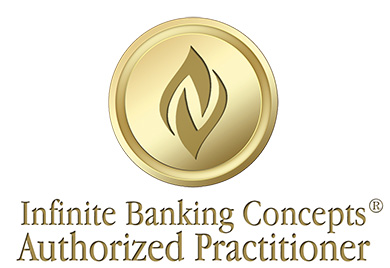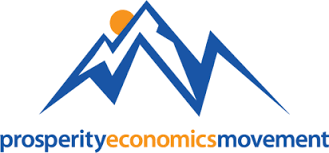By Anthony J. Faso CPA and Kim Butler and
“Happiness is positive cash flow.”
-Fred Adler, venture capitalist.
From a financial perspective, the goal of retirement planning is providing passive income. Passive income is income that is not derived from one’s labor, though there may have been plenty of initial work to set the passive income in motion.
In a “typical” retirement scenario (if there is such a thing), passive income from an individual’s accumulated assets become the source of income rather than a job. Conventional financial planning tells people to save and invest now so that they can retire and spend later. Essentially, retirement planning is seen as a two-step process:
Step 1: Accumulation – saving and investing while working.
Step 2: Distribution – living on interest and assets post-work.
Interest-bearing financial instruments that deliver a regular stream of interest payments at pre-determined rates are the default source of passive income for many retirees. Three common options are savings accounts, certificates of deposit, and bonds. Regular, secure payments offer a measure of financial certainty for retirees who rely on the cash flow to meet their material needs.
For many investors, the Accumulation – Distribution model is unrealistic and broken.
With interest rates at historic lows, the only “certainty” about many interest-bearing financial instruments means they will “certainly” be scrimping to meet monthly expenses! Most banks are offering CD rates of 1% (or less), and savings accounts are even worse. Shockingly, a million dollars in Bank of America’s Growth Money Market Savings account at today’s rates would only produce $1,500 of annual passive income.
With life expectancies growing, interest rates shrinking, and inflation ever-present (yet unpredictable), “living off the interest” is nearly impossible, while living off of the principle becomes riskier than ever. And for those recovering from bankruptcies, foreclosures, and stretches of unemployment, the idea of “saving enough to retire” may feel like a fantasy. And yet, the idea of passive income is one that can help anyone looking to improve their finances and move a step closer to financial freedom.
The good news? There are other options for passive or residual income which are not tied to market interest rates. Even better news? Some can be created with little or no money by utilizing time, talent, and a little know-how. And best news is that you don’t need to quit working or turn 65 to benefit from these strategies. After all, if passive income is the ultimate goal of financial planning/accumulation, why not leapfrog straight to passive income in the most efficient manner possible – with or without a large net worth?
That’s exactly what thought-leaders such as Robert Kiyosaki (Rich Dad, Poor Dad) suggest. He writes, “My rich dad taught me to focus on passive income and spend my time acquiring the assets that provide passive or long term residual income…”
Timothy Ferris (The Four Hour Workweek) teaches entrepreneurs – or anyone who wants to escape their corporate shackles – to start businesses with the ultimate goal of cash flow and (at least relative) time freedom. For both authors, the endgame of passive income is not traditional “retirement,” but a better, more sustainable lifestyle with greater choices – sooner, rather than later.
Some examples of passive income instruments, aside from savings accounts and CD’s:
Bonds: A “fancy IOU,” when you invest in bonds, you essentially lend money to an organization, city, government, or company. You earn interest throughout the life of the bond and receive the principle back when the bond’s term expires. Generally considered a “safe” investment, you can lose money in bonds, so carefully consider the financial solidity of the issuer.
Stock Dividends: A dividend is a sum of money paid regularly by a company to its shareholders out of its profits or reserves. Essentially a profit-sharing plan, dividends are typically distributed quarterly, but other arrangements (monthly or annually) are also common. Many companies have a long history of regular dividend payments to shareholders, though neither dividends nor the value of the stock are guaranteed.
Policy Dividends: Owners of participating life insurance policies may also receive dividends, which are considered a return of unused premium. Early in the policy’s existence, the owner often forgoes receipt of these dividends, instead adding them to the policy’s cash value in the form of paid-up additions. The size of the dividend typically increases with the age of the policy, and policy holders may wish to receive these larger dividends as an annual income source.
Rents: Income that is mostly passive may be derived from real estate and equipment rental agreements. If rental income exceeds the costs of ownership and maintenance (such as mortgages or loans, taxes, and operating costs), the profits may provide a steady stream of cash flow. Real estate investors who purchase wisely and pay their mortgages with rental income can end up with considerable cash flow (and free-and-clear assets) from relatively modest initial investments for down payments and improvements.
Annuities: These are contracts issued by insurance companies that deliver regular payments to the investor. Some people like to include them in an income portfolio, since they deliver regular payouts (sometimes for a lifetime), though they are complex financial products with potential downsides as well.
Royalties: A royalty is a payment made to the owner of a copyrighted work or patent, generally representing a percentage of the publisher’s or company’s profits. Sales of books, songs, and other works result in a residual income stream to the owner of the work. Authors and musicians can also self-publish their work to keep greater profits.
Franchising, Licensing and Fees: Franchise and licensing fees, paid for the privilege of using a branded product or service, are another form of royalty. And depending on the terms of their compensation agreements, brokers and sales representatives can receive a passive income from trail commissions or renewal fees long after they retire.
Limited Partnerships: This is a business arrangement in which some of the participants are investors only. Limited partners generally do not have management responsibilities and are not responsible for the debt obligations of the business.
Network Marketing: Many networkers successfully generate a few hundred dollars a month to supplement their lifestyle. Millions aspire to be “heavy hitters” who earn six figures or more in residual income, though such success stories are the exception rather than the rule.
Online business models: In recent years, many people have turned to the internet to build extra income with affiliate marketing, online advertising, and information marketing in the form of ebooks, DVD’s, or video training programs. There is upfront effort required and no guarantees of income, yet, many success stories as well.
Passive income business models: Examples of passive income businesses include laundromats, ATM machines, and vending machines. After an initial outlay of cash (and perhaps the hiring of a key employee), owners can profit from these businesses with a minimum investment of time.
Loans: Investors can earn very competitive interest rates by lending their money to others, who repay it with interest. Real estate bridge loans (through a reliable broker) are a good choice, with competitive returns and the property offering collateralization. Peer-to-peer lending platforms such as Prosper and Lending Club help borrowers and investors alike obtain more favorable rates by eliminating banks as the middle man.
As a rule, establishing these streams of income is not as easy making a deposit into a savings account. But the potential returns from many passive income sources are far greater than those offered by more common interest-bearing financial instruments, particularly given current interest rates. With cash flow as the ultimate goal, it is wise to develop alternative passive income strategies before, or perhaps even instead of retirement.
ARE YOU READY TO CREATE FOR PASSIVE INCOME?
Have you considered developing other passive income sources?
How could you use your time, talent, or know-how to develop one or more streams of passive income?
Do your current saving allocations allow for the possibility of establishing a passive income before retirement?
If you want to develop passive income strategies, a first step might be to reposition some of your ongoing saving allocations. As Garret Gunderson points out well in Killing Secret Cows, 401k’s restrict investment choices, and ironically, the taxes, fees, and regulations of most qualified plans discourage or prevent investors from using retirement funds to build a cash flow business. Contact us today to discuss how to position yourself for cash flow. We also recommend Busting the Retirement Lies as an excellent resource and starting point.
©Prosperity Economics Movement




